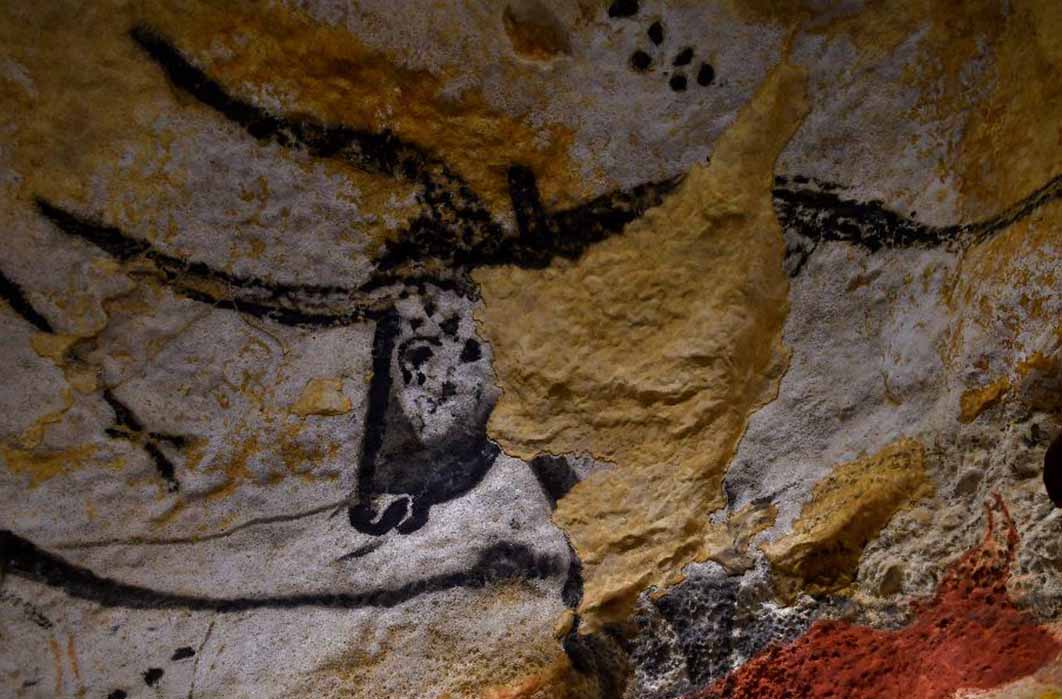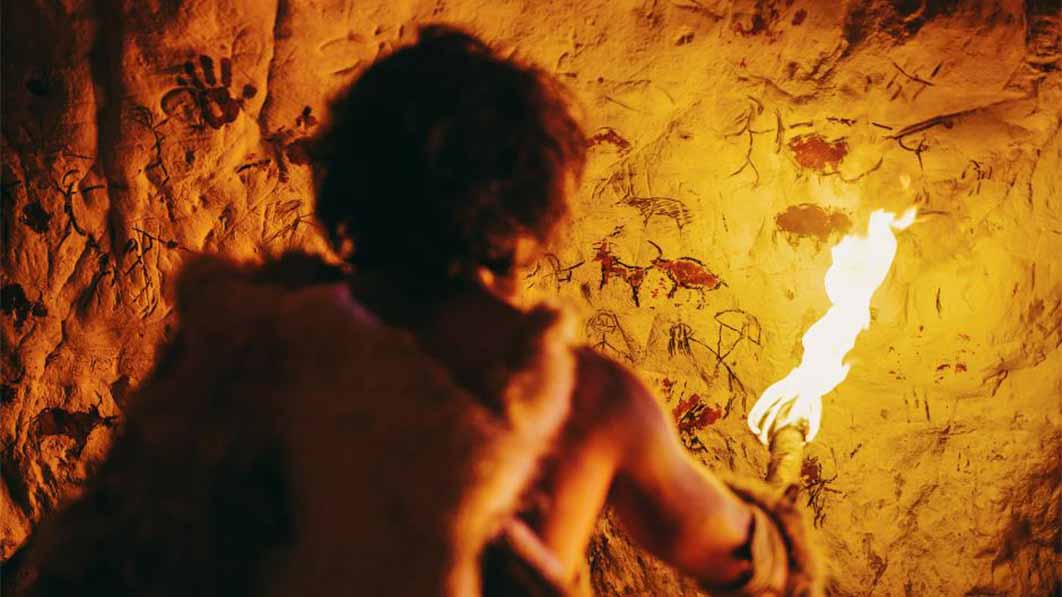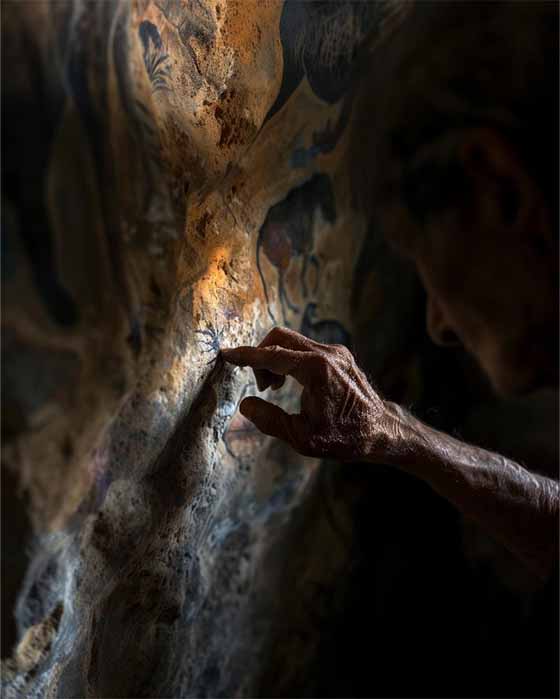
Through Aurochs Eyes: A New Perspective on the Story of Lascaux
They approach me in Lascaux caves on their hands and knees, one carrying a stave atop which tarred plant debris has been wound, set alight from the campfire, which itself was lit from a spark glowing in kindling held inside a hollowed out hoof. Another carries a lamp made from sandstone with a carved hollow at one end, in which tallow burns, the wick made from moss. Lamps and staves are all the illumination they have, and through their eyes it makes shadows shiver, cave walls ripple, roofs and floors disappear into depthless darkness. The caves are cold, but they wear fur garments stitched using needles made from bones, nettle cords their thread.
They know these caves because they and their ancestors have been coming here for millennia. They are bound to the land in which Lascaux sits, intimate with it, knowing it in all its seasons, alert to every sign and natural countenance, which tell them where plants and herbs may be found, where water is, and where the aurochs which they hunt might be located.

They know these caves because they and their ancestors have been coming here for millennia. (Gorodenkoff / Adobe Stock)
I Am Not Just An Aurochs
To them, everything they experience in their lives is special. Though they grasp that some aspects of their lives are dull or ordinary, every other experience – the overwhelming majority – is sacred. A boulder is not just stone; that is too pragmatic an attitude. A stone has another realm behind it, an essence, they believe, which allows them to grasp and mentally manipulate the complexities of the world. They live in a world bright with meaning. A tree for instance is not just a tree, it is a symbol of the vitality of life. I am not just an aurochs, I am a creature of fable, metaphysical yet warm with blood also. Thus the symbols of their tales and what lies behind them are one and the same.
In their lives an opposition exists: light and dark. The sun gives bright light during daytime, but the nights are as black as pitch – deep, impenetrable, ineffable. This opposition symbolises to them one of the profound verities of their lives, which they echo when they enter Lascaux. Outside, daily life continues underneath the sun: inside, darkness dominates, a spirit world underground which they must interact with. To them, a cave is not just a hollow, it is numinous with meaning, formed because of purpose, so that it must be occupied and used with ritual reverence. Music and dance constitute much of that ritual, with reverence felt by every member of the community. Yet deeper still, at the ends of narrow passages and sudden drops, lie places meant for certain individuals alone, the shamans, set apart from their kin by virtue of their skill and experience when dealing with the ethereal realm. The people living around Lascaux are one community, tight-knit, but they are divided by character, with some accorded more status because of their otherworldly abilities. Those permitted to enter the deepest caves are few in number.
I observe shamans of Lascaux as they move around the cave system. They experience altered states of consciousness, which they characterise in ways meaningful to them and their kin. Usually such states are generated by repetitive actions, such as drumming, chanting, and dancing. When experiencing such a state, the mind of a shaman perceives visual, aural, and haptic illusions, which to them constitute the particulars of an alternate realm. Indeed, shamans are those with access to such a realm, via what they experience as their disembodied minds travelling to and from such places. But it is their brains and nervous systems acting in altered states which create the illusion of dissociation and the disembodied journey.
The goal of such shamanic activities is to acquire wisdom from the entities of the ethereal realm, to heal, to bring rain, and to acquire information about animal herds and their whereabouts. Knowledge from shamanic journeys they believe to be critical to the survival and continuation of the community. When a shaman journeys to the ethereal realm the community says that he dies, only to live again when he returns to his body. When his body dies, he travels to exactly the same realm but never returns.

To them, cave walls are not solid, made only of stone, they are composed of other, less substantial materials, some of which represent another world. (Gorka Vega Barbero / Adobe Stock)




